Potrebujeme váš súhlas na využitie jednotlivých dát, aby sa vám okrem iného mohli ukazovať informácie týkajúce sa vašich záujmov. Súhlas udelíte kliknutím na tlačidlo „OK“.
ASTM C687-12
Standard Practice for Determination of Thermal Resistance of Loose-Fill Building Insulation
Automaticky preložený názov:
Štandardná prax pre stanovenie tepelného odporu voľne sypané izolácie budov
NORMA vydaná dňa 1.9.2012
Informácie o norme:
Označenie normy: ASTM C687-12
Poznámka: NEPLATNÁ
Dátum vydania normy: 1.9.2012
Kód tovaru: NS-14609
Počet strán: 10
Približná hmotnosť: 30 g (0.07 libier)
Krajina: Americká technická norma
Kategória: Technické normy ASTM
Kategórie - podobné normy:
Anotácia textu normy ASTM C687-12 :
Keywords:
insulation, loose-fill, thermal resistance, ICS Number Code 91.120.10 (Thermal insulation of buildings)
Doplňujúce informácie
| Significance and Use | ||||||||||||||||||||
|
4.1 The thermal resistance, 4.2 The thermal resistance of an insulation is related to the density and thickness of the insulation. It is desirable to obtain test data on thermal resistances at thicknesses and densities related to the end uses of the product. 4.3 In normal use, the thickness of these products range from less than 100 mm (4 in.) to greater than 500 mm (20 in.). Installed densities depend upon the product type, the installed thickness, the installation equipment used, the installation techniques, and the geometry of the insulated space. 4.4 Loose-fill insulations provide coverage information using densities selected by manufacturers to represent the product settled densities. Generally, it is necessary to know the product thermal performance at a representative density. Some coverage charts utilize multiple densities to show that greater thickness installations usually result in higher installed densities. The use of multiple densities can be detected from the coverage chart by calculating the density for several different thermal resistance levels. (The density for a given thermal resistance can be calculated from the coverage chart by dividing the minimum mass per unit area by the minimum thickness.) If the calculated densities are significantly different at different thermal resistances, the multiple density strategy has been used. 4.5 When applicable specifications or codes do not specify the nominal thermal resistance level to be used for comparison purposes, a recommended practice is to use the Rsi (metric) = 3.3 m2K/W (RIP = 19 [h ft2F/Btu]) label density and thickness for that measurement. 4.6 If the density for test purposes is not available from the coverage chart, a test density shall be established by use of applicable specifications and codes or, if none apply, agreement between the requesting body and the testing organization. 4.7 Generally, thin sections of these materials are not uniform. Thus, the test thickness must be greater than or equal to the product’s representative thickness if the results are to be consistent and typical of use. 4.7.1 For this practice, the minimum
test thickness shall be 100 mm (4 in.) or the representative
thickness, whichever is larger. If the test is to represent an
installation at a lesser thickness, the installed thickness shall
be used.
4.8 Because of the high cost of construction and operation of large test equipment, it is impractical to test at the higher thicknesses at which products are used. For purposes of this practice, it is acceptable to estimate the thermal resistance at any thickness from the thermal resistivity obtained from tests on the product at the minimum test thickness (see 4.9 In principle, any of the standard methods for the determination of thermal resistance are suitable for loose-fill products. These include Test Methods C177, C518, C1114, and C1363. Of these test methods, the heat flow meter apparatus, Test Method C518, is preferred because of its lower cost and shorter testing time. 4.10 The thermal resistance of low-density insulations depend upon the direction of heat flow. Unless otherwise specified, tests shall be performed for the maximum heat flow condition, that is, a horizontal specimen with heat flow-up. 4.11 Specimens shall be prepared in a manner consistent with the intended installation procedure. Products for pneumatic installation shall be pneumatically applied (blown), and products for pour-in-place installation shall be poured into specimen frames. 4.12 Loosefill insulation installed in attic applications will have heat flow up during the winter. At winter design conditions in many areas, the winter design temperature difference will cause convective heat transfer to occur within some loose-fill insulations. The procedure outlined in C687 is not applicable to that measurement unless a C1363 test apparatus is used to reproduce the correct boundary conditions. To determine how seasonal differences can affect product performance, use Practice C1373. Practice C1373 measures the expected winter thermal performance of loose-fill insulation under simulated winter design temperature conditions and provides specimen requirements necessary for that determination. |
||||||||||||||||||||
| 1. Scope | ||||||||||||||||||||
|
1.1 This practice presents a laboratory guide to determine the thermal resistance of loose-fill building insulations at mean temperatures between − 20 and 55°C (−4 to 131°F). 1.2 This practice applies to a wide variety of loose-fill thermal insulation products including fibrous glass, rock/slag wool, or cellulosic fiber materials; granular types including vermiculite and perlite; pelletized products; and any other insulation material installed pneumatically or poured in place. It does not apply to products that change their character after installation either by chemical reaction or the application of binders or adhesives, nor does it consider the effects of structures, containments, facings, or air films. 1.3 Since this practice is designed for reproducible product comparison, it measures the thermal resistance of an insulation material which has been preconditioned to a relatively dry state. Consideration of changes of thermal performance of a hygroscopic insulation by sorption of water is beyond the scope of this practice. 1.4 The sample preparation techniques outlined in this practice do not cover the characterization of loose-fill materials intended for enclosed applications. For those applications, a separate sample preparation technique that simulates the installed condition will be required. However, even for those applications, some other aspects of this practice are applicable. 1.5 The values stated in SI units are to be regarded as the standard. The values given in parentheses are for information only. 1.6 This standard does not purport to address all of the safety concerns, if any, associated with its use. It is the responsibility of the user of this standard to establish appropriate safety and health practices and determine the applicability of regulatory limitations prior to use. |
||||||||||||||||||||
| 2. Referenced Documents | ||||||||||||||||||||
|
Podobné normy:
Historická
1.6.2010
Historická
15.5.2011
Historická
1.11.2011
Historická
15.4.2014
Historická
1.3.2013
Historická
1.9.2012
Odporúčame:
EviZak - všetky zákony vrátane ich evidencie na jednom mieste
Poskytovanie aktuálnych informácií o legislatívnych predpisoch vyhlásených v Zbierke zákonov od roku 1945.
Aktualizácia 2x v mesiaci !
Chcete vedieť viac informácii ? Pozrite sa na túto stránku.


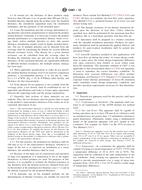
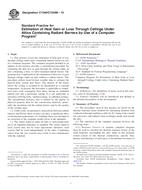 ASTM C1340/C1340M-10..
ASTM C1340/C1340M-10..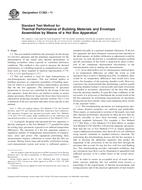 ASTM C1363-11
ASTM C1363-11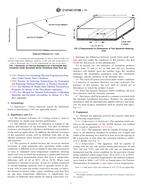 ASTM C1373/C1373M-11..
ASTM C1373/C1373M-11..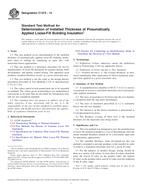 ASTM C1374-14
ASTM C1374-14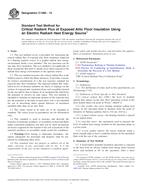 ASTM C1485-13
ASTM C1485-13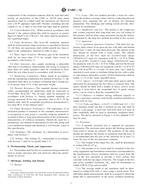 ASTM C1497-12
ASTM C1497-12
 Cookies
Cookies
